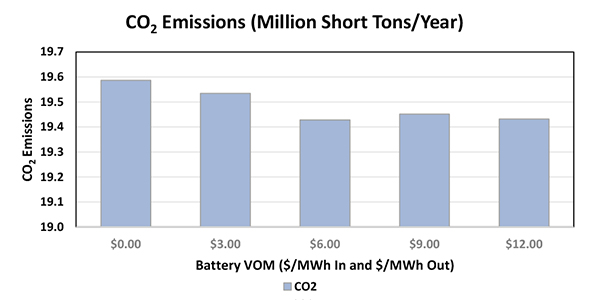ISO-NE Director of Transmission Planning Brent Oberlin on Wednesday presented to the Planning Advisory Committee feedback on “lessons learned” from competitive solicitations under FERC Order 1000. The Boston 2028 request for proposals was the RTO’s first under Order 1000.
The RTO ran the RFP from December 2019 through July of this year, and the process concluded with the selection of a $49 million project by National Grid and Eversource Energy, which had the lowest cost of the 36 received proposals. (See ISO-NE Chooses Incumbent as Boston RFP Winner.) ISO-NE also promised stakeholders, many of whom challenged its selection process, discussions on what did not work well or could be improved in future RFPs and their execution, including developing a submittal template that will summarize any recommendations and guide changes to the Tariff and process.
Oberlin said ISO-NE received comments from eight submitters, including the RTO itself.
Anbaric made several recommendations, including that public presentations should be made to the PAC on all submitted proposals to the RTO, which would allow for adjustments to submissions that are not material project redesigns. Additionally, Anbaric posted that the “goal of Order 1000 for more cost-efficient or cost-effective [projects] should not be defeated by narrowly looking at project capital costs.”
“Seemingly more expensive projects may actually be less expensive to consumers over time because they displace the need for other transmission [and] lower the cost of electricity by allowing for the deliverability of more low-cost renewables energy or solving for out-of-merit dispatch needs due to transmission system limitations,” Anbaric wrote. “The Tariff does not restrict the evaluation criteria such that the ISO is unable to take a broad view to find the best projects in terms of costs to consumers, and such an approach is consistent with Order No. 1000. If needed, the ISO should seek declaratory relief from FERC confirming the latitude it possesses in setting out big-picture evaluation criteria.”
The New England States Committee on Electricity (NESCOE) recommended allowing storage as transmission and the ability to add a new element to the incumbent utility’s system.
“ISO-NE did not allow submissions that included storage as part of their solution,” NESCOE said. “ISO-NE should work to modify its Tariff to allow including storage-as-a-transmission-only asset both in competitive solicitations and incumbent solution studies. FERC precedent supports enhancing competition by expanding eligibility to these storage facilities.”
NESCOE added that when it comes to new elements, “many bids were eliminated because they proposed to add a new element to an incumbent’s system.”
“This reason for elimination needs to be re-examined,” NESCOE wrote. “If the new element is technically a required part of the solution or is superior to any other solution, this restriction could eliminate all bidders but the incumbent.”
Oberlin said because of the nature of many of the comments, ISO-NE has not had sufficient time to provide feedback and that most of them will require further stakeholder discussion. The RTO said it expects to give feedback on the comments early next year.
How and Why for Modeling Batteries in Economic Studies
Wayne Coste, technical manager for resource studies and assessments for the RTO, described how batteries have been modeled in economic studies and why.
Coste said energy storage has become a focus of economic studies, whether it is pumped storage, grid-scale market-facing batteries and energy banking via Quebec. GridView, a software program that simulates power systems’ economic operation in hourly intervals for periods ranging from one day to many years, investigated batteries’ utilization under various cases and sensitivities.
For the key metrics used in the 2020 Economic Study, the direct impact of higher variable operation and maintenance (VOM) costs for batteries is shifting opportunities to pumped storage and raising LMPs in some hours because charge or discharge cannot be justified, which results in a small reduction in the number of export hours in bidirectional ties.
Developments in batteries’ evolution merit continued monitoring, Coste said, including augmentation strategies and associated VOM to be reviewed before the next economic studies.
The study assumed 2.2 million electric vehicles, which is equivalent to 180 GWh of vehicle battery storage, more than 22 times the amount of assumed grid-facing batteries (8 GWh). But Coste said it is uncertain whether EV owners will be receptive to sharing batteries for grid services. Advocates also claim batteries are not degraded by vehicle-to-grid operation.
Time-of-use incentives for charging or discharging might be useful with extensive penetration of solar PV, but not with large penetrations of offshore wind. Coste said repurposing degraded vehicle batteries can augment stationary batteries.



